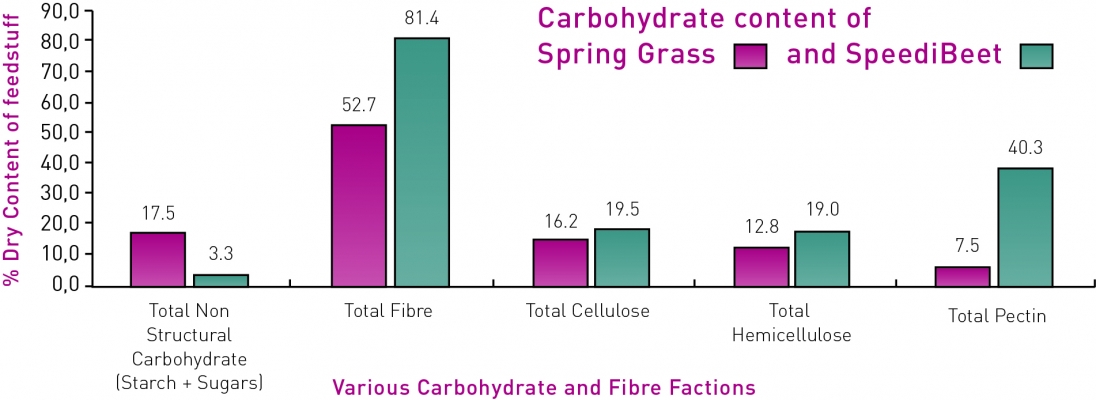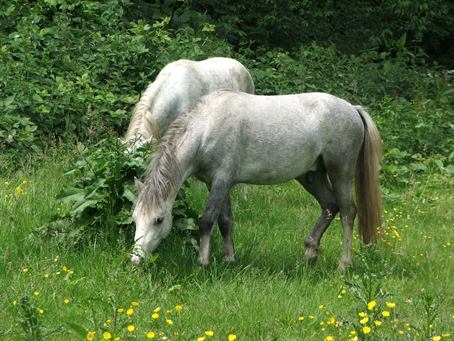|
Advice article filter
|
BeetNote The first mealReduce the negative effects of spring grass by feeding Pavo SpeediBeet before turning out your horseIn the spring, grass can contain high levels of sugar, such as fructans. On average, this is about 17-20% of the dry matter content of grass, with a maximum of 30% (see diagram 1). Pavo SpeediBeet on the other hand has a very low sugar content, approximately 5%. It also has a much higher fibre content than spring grass. For horses suffering from laminitis, the first meal of the day forms the greatest risk. During the first hour, a horse eats the largest amount of grass per time unit. As his stomach fills, the horse eats slower. This is why the intake of grass during the first hour is proportionally the highest and the risk of overloading the gut with sugar, and in particular fructans, is then the highest. Soaked Pavo SpeediBeet contains per gram more fibres (cellulose, hemicellulose and pectin) than fresh spring grass. So by offering your horse a good meal (1.5-2kg in soaked form) before taking him out to the paddock, you can reduce the intake speed of grass in the paddock. The rate of the feed passage through the gut is slower and the small intestine has more time to absorb the sugars which are taken in. This reduces the risk of malfunction in the gut, because disturbances occur when undigested sugar/starch passes too quickly through the gut. Dr Tom Shurlock  
|

